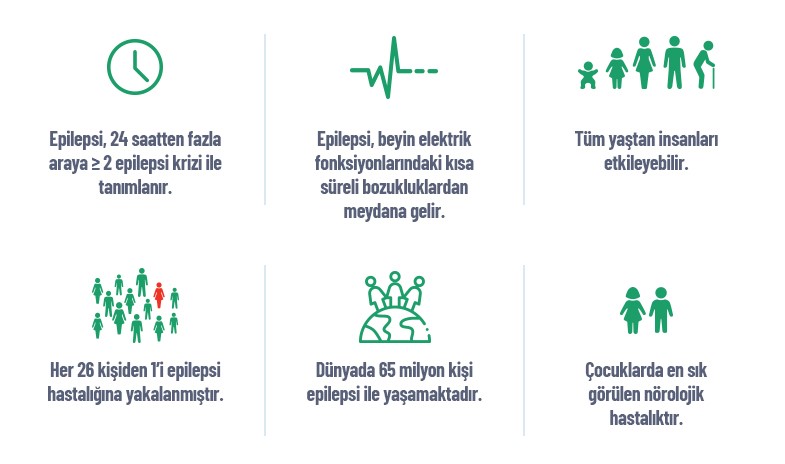
70% of neurological diseases are genetically based. As the genetic basis of brain and nervous system diseases began to emerge, genetic testing gained importance in establishing a definitive diagnosis. Today, genetic backgrounds of neurological diseases are illuminated by next-generation sequencing.
Next Generation Sequencing in Neuro-Genetic Diseases
As the genetic basis of brain and nervous system diseases began to emerge, genetic testing gained importance in establishing a definitive diagnosis. Today, the genetic backgrounds of neurological diseases are illuminated by next-generation sequencing.

Next-generation sequencing It can be used for genetic diagnosis of many diseases such as:
- Epilepsies
- Autism Spectrum Disorders
- Muscular Dystrophies
- Spinal Muscular Atrophies
- Myopathies and Myotonic Syndromes
- Ataxia
- Hereditary Spastic Paraplesia
- Joubert Syndrome
- Cockayne Syndrome
- CMT Neuropathy
- Encephalopathy
- X-Linked Intellectual Disability
Epilepsy
1-10 out of every 26 people in the world live with epilepsy. Each year, 2.4 million people in the world are diagnosed with epilepsy. Although no identified cause is known for 60% of epilepsy cases, they may be associated with genetic variations (idiopathic). Others are symptomatic epilepsies caused by congenital anomalies, genetic diseases and syndromes, head trauma and brain infections.
Although most of the genes associated with epilepsy have been characterized, the number of new genes is increasing day by day with developing technologies.
Single gene epilepsy syndromes include epileptic encephalopathies and benign familial neonatal seizures (BFNN) due to mutations in genes controlling sodium, potassium, and calcium channels.

- Detection of mutations in the KCNQ2 and KCNQ3 genes facilitates the differential diagnosis of BFNN.
- Examination of mutations in the SCN1A gene that causes Dravet Syndrome, one of the epileptic encephalopathies, provided a definitive diagnosis in 70% of the patients.
- In some of the single gene disorders that cause brain anomalies or metabolic diseases, the primary symptom is epilepsy. These include tuberous sclerosis, mucopolysaccharidosis, and leukodystrophies.
- There are genetic disorders that cause epilepsy only, but there are also galactosemia, Tay-Sachs disease and peroxisomal disorders in which seizures are seen together with other symptoms.
- Although the causes of multifactorial disorders such as generalized and absence epilepsy are not fully known, studies have shown that variations in genes such as SLC2A1 and GABRB3 predispose to these diseases.
Intellectual Disability
Intellectual disability, or mental retardation, is a lifelong disorder that manifests in infancy or childhood. It is defined by below-average intellectual ability and is divided into four classes by intelligence quotient (IQ=IQ) as light, medium, heavy and deep. It occurs in 1% of newborns and is usually of genetic origin.
Intellectual disability is a common feature of many developmental disorders; It can occur on its own, as well as with diseases such as congenital malformations, epilepsy, autism spectrum disorders and genetic metabolic disorders. Intellectual disability is clinically and genetically heterogeneous; For this reason, next-generation sequencing technology, which can examine many genes at the same time, is very helpful for definitive diagnosis.
Neuromuscular Diseases
Neuromuscular diseases affecting muscles and nerves; It is a clinically and genetically heterogeneous group of diseases. It is often linked to genetic factors and there are hundreds of different genes associated with this group of diseases. Next-generation sequencing panels that allow simultaneous analysis of multiple genes; It can be helpful in determining the etiology of neuromuscular diseases such as muscular dystrophies, myopathies, myasthenic syndromes, Charcot Marie Tooth Neuropathy.








